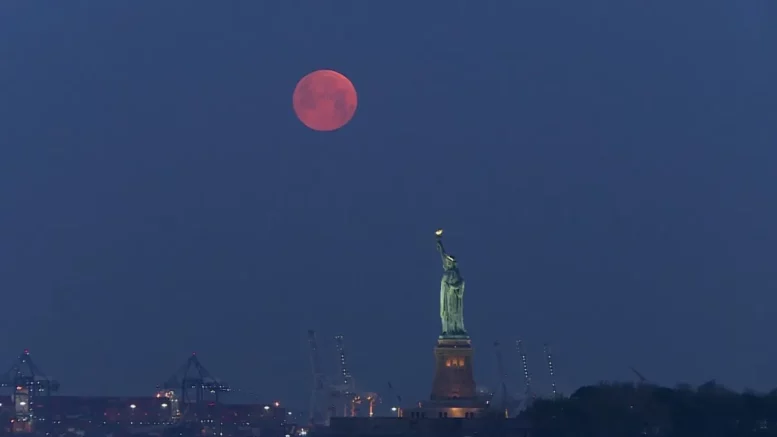This weekend, Southern Californians may need to venture to the mountains for a glimpse of snow, but there’s a celestial event everyone can enjoy: the Snow Moon. As one of the 12 annual full moons, the Snow Moon graces the skies every February, offering a spectacular sight for observers. Here’s what you need to know about this lunar phenomenon and how to catch a glimpse of it.
The name “Snow Moon” finds its roots in the traditions of many Native American cultures, reflecting the heavy snowfall typically experienced during this time of year. February stands out as the United States’ snowiest month, according to the National Weather Service. Additionally, various other names have been attributed to February’s full moon, such as the Hungry Moon, coined by the Cherokee to signify the period of food scarcity in late winter. Alternately, it’s been referred to as the Storm Moon, Wolf Moon, and Candles Moon, as noted by NASA.
What makes this Snow Moon particularly noteworthy is its classification as a “micromoon,” signifying its position at its farthest distance from Earth. This year, the full Moon will hover approximately 252,225 miles away, lending it a slightly smaller appearance compared to other full moons.
For those eager to witness the Snow Moon in all its glory, mark your calendars for the late hours of Friday, Feb. 23, into the early morning hours of Saturday, Feb. 24. While the peak illumination may occur during daylight hours in North America, enthusiasts can catch sight of the moon shortly after moonrise on Saturday night for the best viewing experience.
In Los Angeles, moonrise is anticipated at 6:07 p.m., with the moon ascending above the eastern horizon around sunset and reaching its zenith around midnight.
Looking ahead, the next full moon to anticipate is March’s Worm Moon, scheduled to illuminate the nights of Sunday, March 24, and Monday, March 25. As the first full moon of the spring season, it promises to captivate observers with its celestial allure.

